 | Name: Joanne Pinfield
Overview: Joanne Pinfield was only 5 when she had the frightening experience of waking from a coma in hospital and she has found diabetes frightening for much of her life. At school she felt isolated by being the only person with diabetes. She left at 16 to work in a pottery with a sympathetic boss who helped her not to feel ashamed of diabetes, but then reverted to hiding her condition during 12 years working in a factory. Her father`s death in 2001 prompted her to take better care of herself. She married in 2002 and runs a limousine business with her husband.
There are also interviews with Joanne`s mother, Mary Potter, and husband, Nick Pinfield.
Hits=6 |
|
|  | Name: Leon Cowdery
Overview: When Leon Cowdery left school at 15, his diabetes barred him from his chosen profession of sign-writing because he was not allowed to go up a ladder. He worked as a cycle mechanic and then, in order to avoid going to his parents` Seventh-day Adventist church, he took up floor-laying at weekends. This led him into the building trade and he has been going up ladders ever since! He designed the house in which he lives and, now that he`s semi-retired, he helps his wife with gardening and maintains four motorbikes from the 1950s.
Hits=4 |
|
| 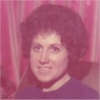 | Name: Shirley
Overview: Shirley left school at 16 and worked for the Inland Revenue until retirement. When she was diagnosed, her mother was very ashamed. Shirley looked after her parents until they died and then lived alone. She has had to cope alone with severe hypos, but says that living alone makes it easier to keep to a strict diet. She feels that her diet has made her healthier than she would have been if she hadn`t had diabetes. She has a low opinion of doctors, apart from a few consultants, but likes the group meetings held nowadays by specialist nurses.
Hits=3 |
|
| 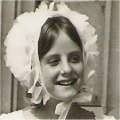 | Name: Harriet
Overview: Harriet was diagnosed when she was 12, and loved Great Ormond Street Hospital, where she was treated until she was 17. Her grammar school couldn`t cope with her diabetes, so she left at 15 to do O and A Levels elsewhere, and eventually gained a Diploma in Fine and Decorative Arts. She has worked for the Tate Gallery and for a company that bought art for corporations, and has also run her own business, and worked in college and university administration. Her daughter was diagnosed with diabetes at the age of 9.
There is also an interview with Harriet`s husband, Greg.
Hits=3 |
|
|
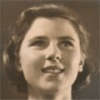 | Name: Margaret Williamson
Overview: Margaret Williamson was brought up in a village in North Yorkshire, the only daughter of an industrial chemist. Her mother was diagnosed with diabetes when Margaret was aged 2, and put on a diet of no carbohydrate with high quantities of insulin. When Margaret was diagnosed, a Newcastle consultant, James Spence, put mother and daughter on a more modern regime of high carbohydrate, which was weighed at each meal. After school, she went to business college in London, and worked as a secretary for directors of scientific institutions. She married a Cambridge research scientist and had two children.
Hits=3 |
|
| 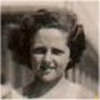 | Name: Ann
Overview: Ann came to England in 1945, and was diagnosed when the matron at her boarding school found her drinking the bath water. Her mother had worked as a nurse at Kings Hospital, London, and took her daughter there, to be treated by R.D. Lawrence (co-founder of the British Diabetes Association, now Diabetes UK). She has memories of being made to go into a hypo, of glass syringes, thick needles, and embarrassing urine tests. She worked as an occupational therapist, and brought up two children alone. Despite eyesight problems, she now makes a living as an artist.
Hits=3 |
|
|
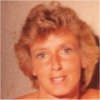 | Name: Shirley Jones
Overview: Shirley Jones` parents had little money to spend on food and she remembers eating bread and jam `many, many times`. She married at 19, divorced, married again at 21, and then her second husband left her to bring up two small children alone before she was diagnosed with diabetes, aged 32. She was recruited into the UK Prospective trial for Type 2 diabetes, but rapidly became insulin-dependent. Until recently, she ran a pub with her current partner. She is now on kidney dialysis.
Hits=3 |
|
| 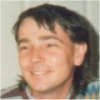 | Name: Philip Newick
Overview: Philip Newick comes from a working-class Bristol family which was greatly affected by redundancies in the aircraft industry. Determined to escape such insecurity, he did a degree and postgraduate work in chemical engineering. He worked for HJ Heinz until after diagnosis, when he was told that he could no longer work abroad. He then got a job nearer to his home in Birmingham and all his treatment has been in that city. He and his wife still weigh and measure all his food and he has few health problems - apart from an inability to detect the onset of hypos.
Hits=3 |
|
|
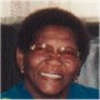 | Name: Agnes
Overview: Agnes` father worked in sugar cane fields in St. Kitts and her mother in the markets. Agnes worked as a maid until coming to England aged 22. She has been married twice and has five children. She controlled her diabetes with tablets, apart from a short spell on insulin while being treated for cancer. At the time of recording, she had recovered from cancer, but was about to go on insulin permanently. At 66, she still gets up at 4.30 every morning to work as a cleaning supervisor and mobile carer, and says her Christian faith sustains her.
Hits=3 |
|
| 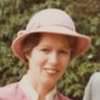 | Name: Mo Linton
Overview: Mo Linton`s husband, Douglas, was born in 1926 and diagnosed with diabetes aged three. He kept his diabetes secret and became a racing driver, ensuring that his urine tests would pass medicals and keeping his blood sugars high during races. Mo met him in early 1967, when he was 40 and she was 22, but didn`t discover he was diabetic until four years later. They lived together from 1973 and married in 1981. She found secrecy difficult and they both relaxed when everyone learnt he had diabetes after a newspaper reported his opening of a new diabetes centre in 1998.
Hits=3 |
|
|
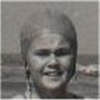 | Name: Victoria
Overview: Victoria`s father was a bank manager and she attended a private school and a grammar school. At 16, she developed an eating disorder after a boyfriend dropped her because she was diabetic, and at 25 she briefly rebelled against her diabetic diet. Otherwise, she feels diabetes has caused few problems and hasn`t prevented her from achieving her ambition of becoming a teacher. She thinks perhaps it did influence her not to have children, but she enjoys life with her partner, and is grateful for new blood testing equipment and other developments which have given diabetics greater freedom.
Hits=3 |
|
| 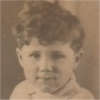 | Name: Allan Jones
Overview: Allan Jones` father was a miner with six children. They had little money but had to pay for insulin and equipment until the National Health Service was created in 1948. They couldn`t afford cotton wool and re-used needles until they were blunt. When Allan was 15 he got a job as a messenger on the railways but had to pass a medical before being promoted. He feared he would lose his job if his diabetes was discovered, so took with him a sample of his brother`s urine! He passed the medical and worked happily on the railways for 30 years.
Hits=2 |
|
|
 | Name: Kushira Hackett
Overview: Kushira Hackett`s mother was white and her father black – from Guyana. Her parents split up when she was 5 and her mother later married a Jamaican. After diagnosis, the hospital staff explained to her mother about portions and gave her scales for weighing food, but gave no explanations to Kushira. Her mother also gave no explanations, and she thinks this led to her rebellion against diabetes, and to her leaving home aged 16. She had a period of homelessness, but later gained a law degree and now lives happily in Birmingham with her partner and two children.
Hits=2 |
|
|  | Name: Edward Walsh
Overview: Edward Walsh was the son of a village baker. He left school at 15 and trained as an electromechanical engineer. He always had a weight problem but played a lot of sport and felt he had a sensible diet, so was disappointed and upset when he was diagnosed at the age of 50. He controlled his diabetes with diet only, then tablets, then insulin from 2000 but had a remarkable period of 3 months in 2002 when he was able to give up insulin altogether, while working on a contract in French Guyana.
Hits=2 |
|
|
 | Name: Mushtaq
Overview: Mushtaq was in business until he gave up work, aged thirty, to look after his parents full-time. Both parents had Type 2 diabetes and they had managed well, until his mother developed Alzheimers and his father manic depression. He finds that mental illnesses and diabetes affect each other greatly, but he has difficulty in persuading specialists in these fields to consult each other. He earns far less than he did in business and does it for love, but wishes that the government could pay a little more, in recognition of how much money is saved by family members` full-time care.
There is also an interview with Mushtaq`s sister, Shanaz.
Hits=2 |
|
| 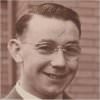 | Name: Roy
Overview: When Roy was diagnosed with diabetes at the age of 17, he was admitted to Leicester Royal Infirmary for a month. He remembers learning about injections and urine testing but can`t remember any guidance about diet, apart from advice to cut out all sugar. He would like to have joined the forces during the Second World War, but failed his medical examination. According to his wife, he has had many serious hypos ever since he was diagnosed. He began to lose his sight in 1972 and now only has very slight vision in one eye.
There is also an interview with Roy`s wife, Madge.
Hits=2 |
|
|
 | Name: Nick Pinfield
Overview: Nick Pinfield`s wife, Joanne, has had diabetes since she was aged five in 1978. He met her around 1998 at a giftware factory - where he was soldering pewter and she was painting it - and they married in 2002. They now run a limousine business and their decision not to have children is unconnected with diabetes. Unlike Joanne`s mother who saw her have severe hypos, Nick has only known Joanne since she has been managing her diabetes well and it has had little effect on their lives together. However, he does accompany her to all medical appointments.
There are also interviews with Nick Pinfield`s wife, Joanne Pinfield , and with his mother-in-law, Mary Potter.
Hits=2 |
|
| 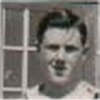 | Name: Ron Craythorne
Overview: Ron Craythorne worked all his life in the family business of carpentry and joinery but, when he retired, there was no-one to take over, so now he and his wife give shows for charity, showing people round the old workshop and selling the products of his woodturning. (He carved and painted the wooden fruit and bowls shown in his photo.) He has played team sports all his life and diabetes has caused him few problems. However, he knows of the problems it can cause, from members of the diabetic group he founded several years ago.
Hits=1 |
|
|
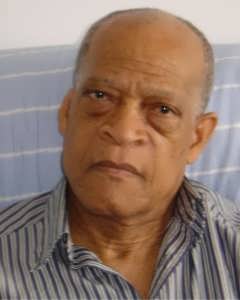 | Name: George Saunders
Overview: George Saunders was brought up in St.Kitts, worked for his father as a tailor, and came to England in 1958. Since recording this interview, he has received a lot of publicity, because his Birmingham workshop, where he worked as a tailor for nearly 30 years, has become part of a National Trust museum. After he was diagnosed, he was on tablets for about a year before changing to insulin. He is full of praise for medical staff, even though he ignores their advice when he thinks he knows best. He feels that his diabetes has caused him few problems.
Hits=1 |
|
| 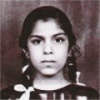 | Name: Bena
Overview: Bena was born in the Kigezi District of Uganda, the daughter of a wealthy businessman. She was diagnosed when nearly 12 and then shunned by children who thought diabetes was contagious. She lived on chapattis and spinach and a bitter vegetable juice thought to cure diabetes. When Idi Amin expelled Ugandan Asians in 1972, her family came to England, and she was delighted to be allowed to eat a wider range of food. She eventually married an Englishman and had two daughters. She works as an office administrator, in a social services department that supports disabled children.
There are also interviews with Bena`s daughter, Emma and her husband, Terry.
Hits=1 |
|
|
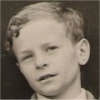 | Name: Philip
Overview: Philip was diagnosed aged 9 and considers that it`s better to get diabetes young, when the body is more adaptable. He attended a grammar school, and regrets that he often used diabetes as an excuse to miss school. He left at 16, but acquired more qualifications later and became a successful accountant. His diabetes was well controlled and caused little trouble for most of his life, until he began to get early morning hypos a few years ago. (He finds the term `hypo` unhelpful, since it`s used to refer to anything from a mild sensation to complete unconsciousness.)
Hits=1 |
|
| 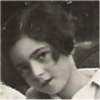 | Name: Erika Harding
Overview: Erika Harding`s father was Jewish and, in 1939, after the Nazis invaded Austria, she came by boat to England. When she looks at her photo of the thin, hollow-eyed little girl on the boat, she`s sure that she already had diabetes. After diagnosis, she was treated at King`s College Hospital, London, by R.D. Lawrence (co-founder of the British Diabetes Association, now Diabetes UK). She left grammar school at 18 and worked as a medical laboratory scientist until she retired. She and her artist husband have both played in many chamber music ensembles.
Hits=1 |
|
|
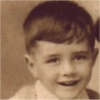 | Name: Kevin Jones
Overview: Kevin Jones` father worked in a Welsh mine, then joined the Royal Navy and worked his way up from sick berth attendant to Lieutenant Commander. Kevin went to various grammar schools in Navy ports and left at 18 to train as an accountant. He worked for several large companies, unhindered by his diabetes, but has had more problems in recent years. In 2002 his leg was amputated, but he had great help from the Limb Centre and now walks and drives with an artificial limb. He loves jazz, and is pictured with a statuette of a jazz musician.
Hits=1 |
|
| 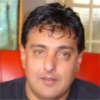 | Name: Mr. Baghria
Overview: Mr. Baghria`s parents are Sikhs who came from India in the 1950s; his father worked as a galvaniser in a factory. His parents` aim was that he should have a good education, but his own dream was to become a truck driver. He married young and he and his wife saved to buy his HGV licence. Not long afterwards, he was diagnosed with diabetes and his licence was revoked. He appealed and managed to get it back, on condition that he had a yearly medical - and he has been driving all over Europe ever since.
Hits=1 |
|
|
 | Name: James Jones
Overview: James Jones left school at 14 and worked with his father as a groundsman before joining the RAF in the Second World War, then becoming a sheet metal worker. When he collapsed at the age of 48, his confused conversation led him to be taken to the Warneford mental hospital and he was given electric shock treatment before being diagnosed with diabetes. He was married to his childhood sweetheart for 52 years and has three daughters. He enjoys flying in gliders, and has an ambition to try wing-walking on top of a bi-plane!
Hits=1 |
|
| 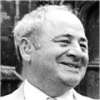 | Name: Colin Dexter
Overview: Colin Dexter was diagnosed in the same year that his Inspector Morse novels began to be shown on TV, after his wife recognised his symptoms and urged him to see his GP. He was admitted to hospital immediately and put on an insulin drip. He sometimes finds it a bother to take all his insulin and blood-testing equipment with him on his travels, but doesn`t otherwise allow diabetes to dominate his life. He continued to be a `very big drinker indeed` until 2004, when he gave up alcohol altogether.
Hits=1 |
|
|
 | Name: David Matthews
Overview: David Matthews is Professor of Diabetes Medicine at Oxford and Medical Tutor at Harris Manchester College. His research interests include mathematical modelling of insulin resistance, homeostatic model assessment of beta-cell function and insulin resistance, therapeutic agents in type 2, and the global diabetes epidemic. In 2010 he retired from clinical practice and from Chairmanship of the Oxford Centre for Diabetes, Endocrinology & Metabolism. He continues to be Director of the Oxford Health Alliance and Co-Director for the UK Diabetes Research Network. He is now Director of the Tseu Institute at Harris Manchester College. He was Principal Investigator for Diabetes Stories
Hits=1 |
|
| 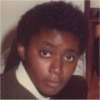 | Name: Patsy
Overview: Patsy is one of ten children. Her parents emigrated from Jamaica in the 1950s. Her mother worked as an auxiliary nurse and her father as a builder. After diagnosis, she resented having to weigh portions of carbohydrate, while her family could eat what they liked. She still calculates the weight of food. The question `Why me?` has persisted throughout her life. She feels that everything possible has gone wrong with her health and she is now on haemodialysis. But her love for her young son keeps her going and, despite poor health, she`s determined to spend time with him.
Hits=1 |
|
|
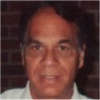 | Name: Tas Bokhari
Overview: Tas Bokhari`s parents were wealthy landowners in India. As Muslims, they were forced to migrate to Pakistan in 1947 and many of his family were killed on the way. He was educated in a mission school and a college before moving to England in 1961. He married an English librarian in 1964 and has two children. After acquiring an HNC in Mechanical Engineering, he worked as a motorcycle inspector and design engineer and then ran a nursing home. He also had a part-time job at Edgbaston cricket ground and was well-known in Pakistan for his radio cricket commentaries.
Hits=1 |
|
| 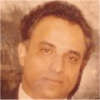 | Name: David
Overview: David`s father was a Fijian doctor whose work took him all round the Fiji islands. David himself managed a small post office before coming to England in 1959. His wife and baby son joined him later and they had six more children. He had converted from Methodism to his wife`s Catholicism and his children attended Catholic schools in Birmingham. He worked long hours to support them, as a telecommunications engineer, until he retired at the age of 60. He used to dream of returning to Fiji but now feels he couldn`t leave his children and grandchildren.
Hits=1 |
|
|
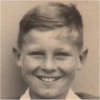 | Name: Ian Vokins
Overview: Ian Vokins was diagnosed shortly after leaving junior school and when he joined his secondary modern school, he was treated `like an alien` and fed dried apricots at every school dinner for 3 years! He was bullied throughout his school-days and left as soon as he could, aged 15. After that, life `seemed to open up` and he `started learning` while he worked as a technician in fields as diverse as atomic energy, cryogenics, orthotics, packaging, and space science. His work often took him abroad, and he says that diabetes hasn`t stopped him doing anything, apart from flying aeroplanes!
Hits=1 |
|
|  | Name: Emma
Overview: Emma`s mother, Bena, was diagnosed with diabetes in Uganda in 1965 and came to England when her family was expelled by Idi Amin. She married an Englishman, Terry, and had two children – Emma and her younger sister. When Terry was at work, Emma and her sister had to cope from an early age with their mother becoming unconscious. Her sister has now married and left home, but Emma still lives with her parents and was often phoned at work when her mother passed out – until her mother attended a DAFNE course and gained better control of her diabetes.
There are also interviews with Emma`s mother, Bena, and her father, Terry.
Hits=1 |
|
|
| Search returned 64 matches |